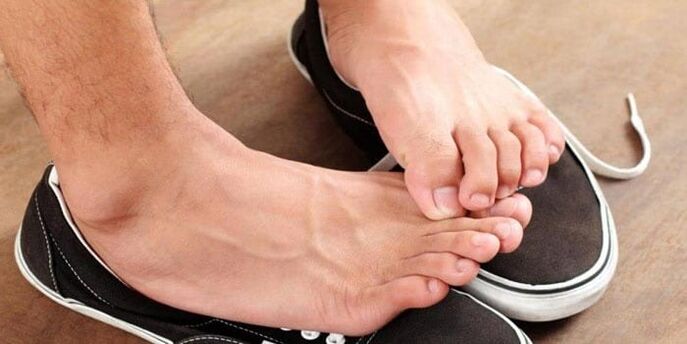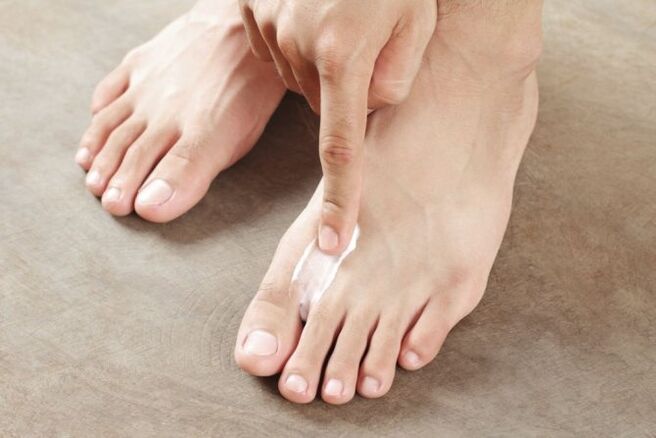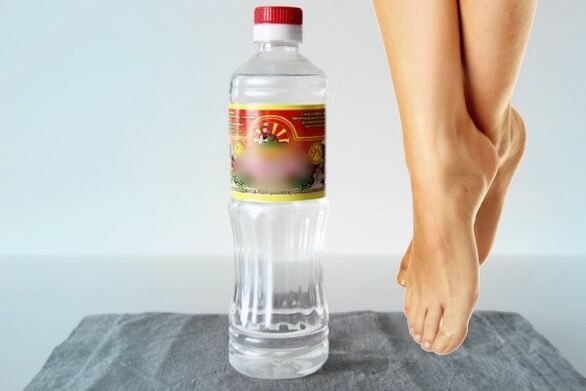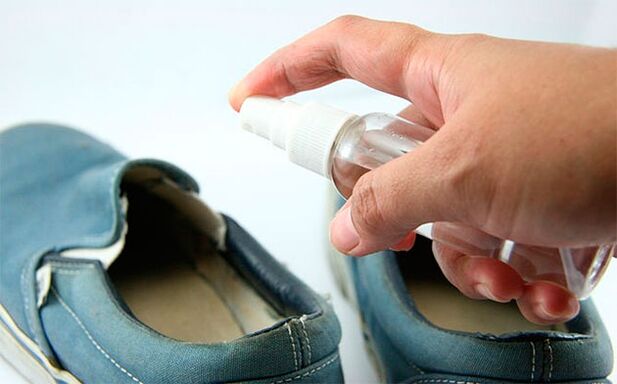Fungal pathology is a common disease in people of all ages. Treating leg fungus between the toes is necessary because of the high risk of infecting others, including your family. Mycosis is easy to treat if its symptoms are detected at the initial stage. In chronic cases, it may take several months to a year to get rid of the disease.

Etiology
Fungal spores can be found for years on clothing, shoes, and household items.
The appearance of fungus on the legs is a sign that the body's protective functions have failed. Vitamin deficiencies, exacerbations of chronic infections, seasonal viral diseases - all lead to weakened immunity and then to fungal diseases. A healthy body does not allow disease-causing microbes to multiply. Risk factors:
- One of the following diseases is present:
- gastrointestinal pathology;
- tuberculosis;
- ENT infection;
- diabetes;
- HIV.
- changes in metabolism;
- Hormone surge:
- puberty;
- Pregnant;
- menopause;
- menopause.
- wearing ill-fitting shoes;
- the presence of corns, abrasions on the feet;
- wear someone else's shoes;
- Using poorly sterilized pedicure tools;
- Walking barefoot in saunas, baths, swimming pools;
- excessive sweating;
- bad habits:
- alcoholism;
- smokes.
- use of products with moulds;
- Genetic predisposition to fungal infections (violation of skin pH balance).
signs of disease
Signs of fungus between the toes:
- itching between the toes;
- Peeling between the fingers;
- Blisters appear on the skin between the fingers, rupture to form oozing erosions;
- On the feet, the skin thickens and cracks appear (this usually occurs under the little finger);
- Nails on the big toe appear dull and change in color and structure;
- rash, redness of the skin on the feet;
- Bad foot odor.
diagnosis method
Simply detecting disease is not enough. We need a detailed diagnosis to help identify specific strains of the fungus and their susceptibility to antifungal drugs. To do this, the dermatologist instructs the patient to scrape from the affected area of the foot after the examination. As a result of these studies, treatments that are effective in specific cases can be prescribed.
You can identify fungus at home. Potassium permanganate can help. If you dip your feet in a dilute solution of potassium permanganate, healthy skin turns pink, while diseased areas remain white.

What to treat?
To heal interdigital fungus on your legs, you'll need to be patient—in some cases, treatment can take anywhere from a month to a year. Treatment of mycoses includes the use of local (symptom-relieving) and systemic-acting fungicides, antibacterial and therapeutic drugs, and vitamin complexes. It is important to treat the disease with a full course of medication. It is important to continue using the medicine for another 10 days after your symptoms have disappeared.
drug
Drugs of synthetic origin against foot fungi can be divided into topical and systemic agents. Locally aimed at relieving symptoms and treating incipient fungal infections. And systemic use of antifungal drugs has complex effects on the body. These drugs are very toxic, so they are contraindicated in breastfeeding children, pregnant women.
Release form of preparation for external use:
- ointment;
- cream;
- spray;
- nail polish.
Topical remedies are beneficial for fungus:
- Castellani liquid;
- Chloronitrophenol;
- Cationic preservatives;
- ammonia;
- potassium permanganate;
- iodine;
- Aluminum acetate solution;
- A solution of iodine in aqueous potassium iodide.
Active substances that affect fungi systemically are available in the form of tablets and solutions for intravenous injection.
Heal with folk remedies
You can heal fungus between the toes with the help of traditional medical recipes. However, the use of such methods should obtain the consent of the attending physician. It is also important to ensure that the body does not have an allergic reaction to natural medicinal ingredients. To check this, you need to apply a small amount on the inner bend of your elbow and wait a few hours. If there is no redness or rash in the area, folk remedies for toe fungus are suitable.

Fungus with Vinegar
Regular vinegar (preferably wine or apple cider vinegar) has an acidic environment that is not conducive to fungal infections. You can quickly heal fungus on your big toe with daily vinegar compresses. It is recommended to wrap the legs in polyethylene and leave for 5 minutes. Afterwards, wash the feet thoroughly under running water and apply antifungal medication.
Another recipe using vinegar:
- Pour a vial of glycerin into a half-liter jar.
- Fill the jar up to the neck with 70% vinegar and mix well.
- Soak a cotton swab in the solution and apply between your fingers daily.
sea salt for toe fungus
The most effective treatment with folk remedies is the use of sea salt. You can also use regular table salt if you can't find sea salt. To prepare a foot bath solution, add 5 tablespoons of salt to hot water. Wash your feet several times a day until the fungus on your toes has stabilized and healed.
How does soda help?
A violation of the acid-base balance can cause fungus to develop between the fingers. Sparkling water restores balance to the skin and actively fights foot fungus. Recipes using soda:
- A soda foot bath is prepared by adding 2 tablespoons to 2 liters of water at a temperature of 40 degrees. lake. soda.
- Soda-based fungus paste is made with 2 tablespoons of this ingredient, a spoonful of water, and a few drops of lemon juice. Mix all ingredients. A chemical reaction will take place as the air bubbles are released. After they are gone, you can apply the paste to the damaged areas of your skin.
bow use
Preparing to treat fungal infections of common onions is very simple. You can chop onion heads into gruel and apply this medicine to the affected area. Garlic porridge (1: 1) can be added. Squeezing onion juice and using a cotton swab to apply the juice to peeling feet is also helpful. Apply daily.

Hygiene and care of feet and shoes
During the treatment of toe fungus it is important to assign the patient personal underwear, socks, hygiene items (grindstone, scissors). All footwear must be thoroughly washed and dried.If possible, shoes should be treated with a 1% formaldehyde-methanol solution - the fungus will die within 15 minutes.Perform a foot hygiene routine at least 2 times a day, keep your shoes dry and clean, and avoid blisters and chafing on your legs. Laundry is best done at the highest temperature allowed.
operation treatment
If fungal sores do not disappear after the use of local and systemic medicines, and folk remedies do not have the desired effect, surgery for fungus of the legs is possible. The procedure is performed in a medical facility under local anesthesia using a local anesthetic. The damaged skin is cut away with a scalpel and the area is treated with an antiseptic. This method guarantees full recovery.
How to treat children?
Fungus is less common in children than in adults. However, children can get fungal infections due to non-compliance with hygiene rules. Due to frequent injuries, this fungus mainly occurs on the thumb and little finger of children. Treatment consists of topical preparations - ointments and creams.

Characteristics of pregnant women
Fungus between the toes is common during pregnancy because a woman's immunity is weakened. The disease is not dangerous to the fetus in utero, but it is possible and necessary to treat the disease during pregnancy to avoid later transmission to an already born baby. In terms of drug selection, pregnant women should choose the most non-toxic, easy-to-use, and short-course drugs. Perhaps a folk remedy for fungal diseases. Systemic therapy is contraindicated.
prevention method
In order to ensure that fungal diseases do not invade the body, it is necessary to increase the body's protective functions in every possible way - harden, eat well, give up bad habits. It is important to follow the rules of personal hygiene: wash your hands after visiting public places, change your shoes in swimming pools and bathrooms, wash your feet daily. You can't wear someone else's shoes and let others wear yours. When shopping for shoes and clothing, choose items made from natural fabrics.
















